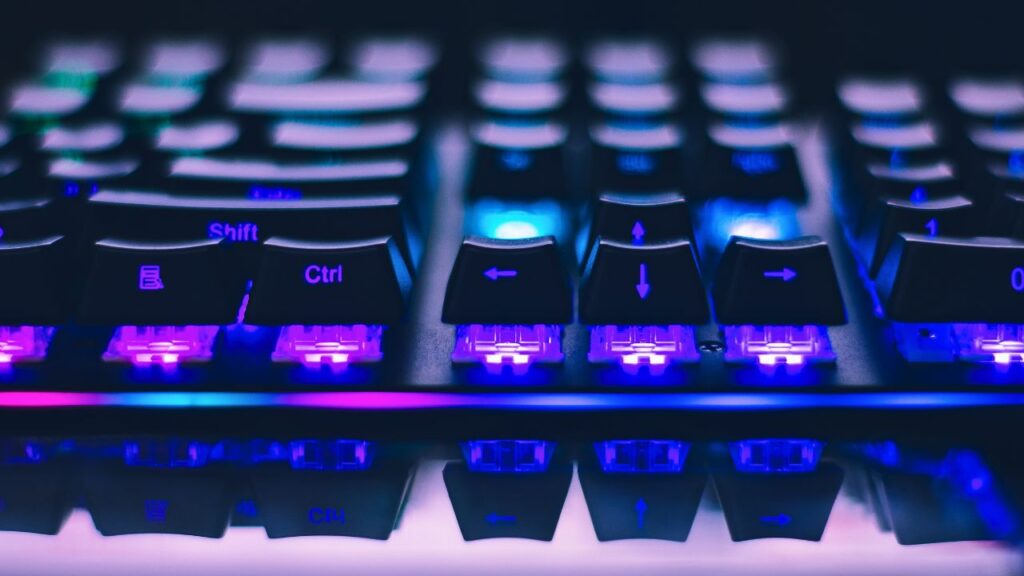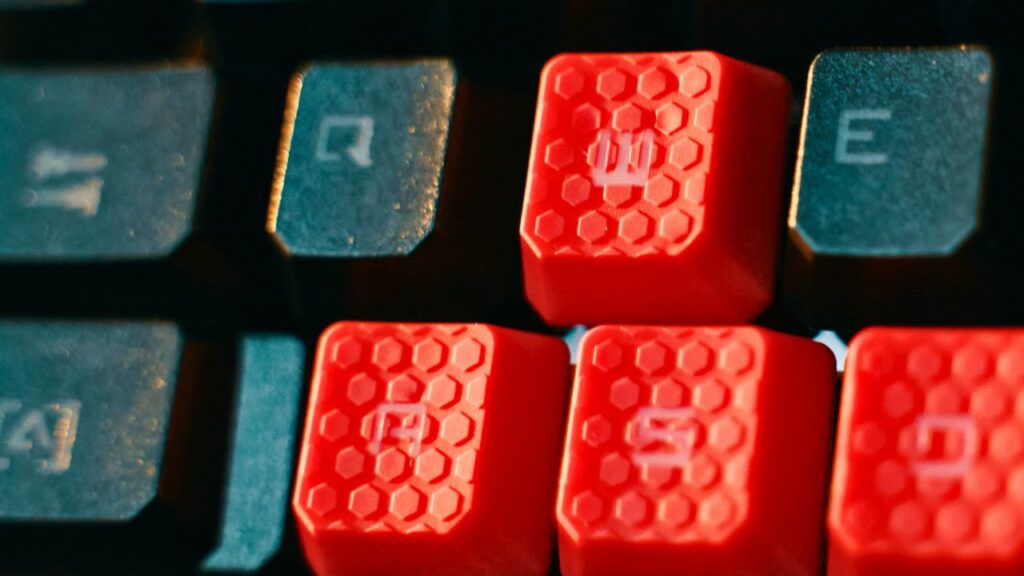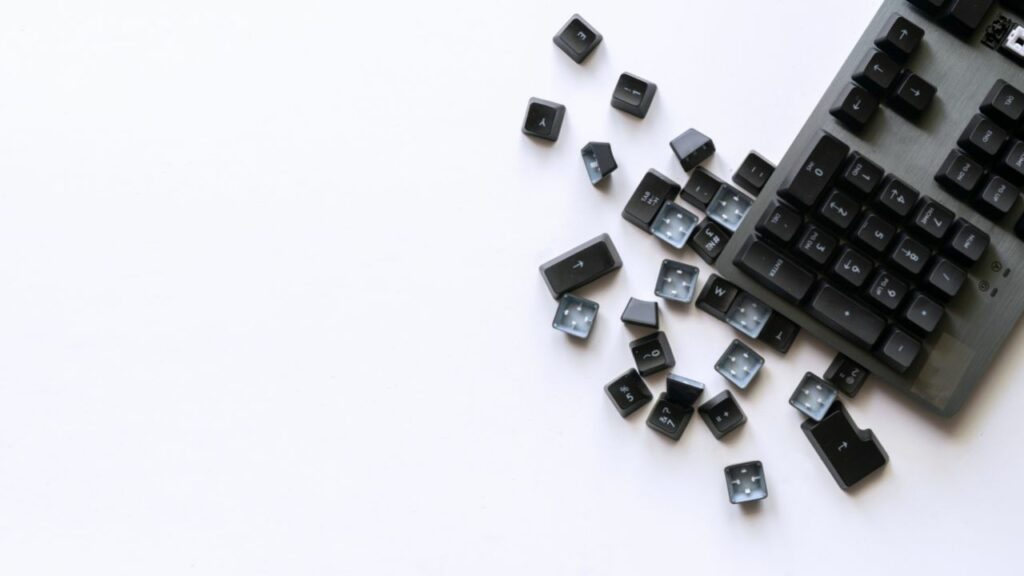Mechanical keyboards have gained tremendous popularity in recent times due to their sturdiness, responsiveness, precision, comfort, and typing speed. To unlock the best results when using a mechanical keyboard, it is vital to choose the right keycap materials. In this comprehensive guide, we will discuss the different keycap materials, their pros and cons, and provide recommendations for various user profiles.
The Science of Keycap Materials

When selecting keycap materials, it is essential to consider factors such as durability, texture, sound, and aesthetics. Keycap manufacturing processes, including injection molding, double-shot molding, dye-sublimation, and laser etching, play a crucial role in determining these properties. To learn more about dye-sublimation, visit this detailed guide on dye-sub keycaps.
Common Keycap Materials
There are several materials used in keycap production, but ABS (Acrylonitrile Butadiene Styrene) and PBT (Polybutylene Terephthalate) are the most common. Let’s explore the properties, pros, and cons of these materials and some other less-common materials like POM (Polyoxymethylene) and PC (Polycarbonate).
ABS (Acrylonitrile Butadiene Styrene)
ABS is a widely used material in the manufacturing of keycaps for both gaming and office keyboards. It is lighter than PBT, making it more affordable. However, ABS keycaps do not offer the same grip as PBT and are more prone to grease and wear from oily fingers or food. For an in-depth comparison between ABS and PBT keycaps, visit ABS vs. PBT Keycaps.
| Pros | Cons |
|---|---|
| Affordable | Less durable than PBT |
| Lightweight | Prone to wear and shine over time |
| Wide variety of colors and designs | Susceptible to grease and stains |
| available |
PBT (Polybutylene Terephthalate)
PBT keycaps are highly sought after by both typists and gamers for their durability, quieter keystrokes, and superior grip. They are also more resistant to wear and shine, making them ideal for those who frequently use computers.
| Pros | Cons |
|---|---|
| Durable and resistant to wear | More expensive than ABS |
| Quieter keystrokes | Limited color options due to manufacturing process |
| Better grip and texture |
POM (Polyoxymethylene)
POM keycaps offer a soft yet resilient solution but require harder pressing of keys, which can lead to slower typing and missed strokes. They also tend to look less professional than other options.
| Pros | Cons |
|---|---|
| Soft and smooth texture | Requires harder key presses |
| Resilient | Less professional appearance |
| Limited availability |
PC (Polycarbonate)
PC keycaps are a relatively uncommon choice, known for their durability and transparent properties, which make them an excellent option for RGB backlit keyboards.
| Pros | Cons |
|---|---|
| Durable | Expensive |
| Transparent, ideal for RGB backlit keyboards | Limited design and color options |
Other Materials

Keycap materials include resin, metal, and wooden keycaps. These materials are typically used for artisan keycaps, adding unique designs, colors, and feels to mechanical keyboards. However, they may not be as practical or widely available as ABS and PBT keycaps.
Resin and Artisan Keycaps
Resin and artisan keycaps are handcrafted, offering unique designs that can elevate the aesthetics of your mechanical keyboard. Each keycap is meticulously created by skilled artisans, resulting in intricate and one-of-a-kind patterns and textures. However, due to the labor-intensive production process, these keycaps tend to be expensive and available in limited quantities. These keycaps are ideal for keyboard enthusiasts and collectors who prioritize exclusivity and craftsmanship over affordability.
Metal Keycaps
Metal keycaps are known for their durability and distinctive appearance. They are often made from materials such as aluminum or brass, which provide a premium feel and an elegant look to your keyboard. However, metal keycaps have some drawbacks. They can be quite heavy, resulting in increased finger fatigue during extended typing sessions. Additionally, metal keycaps tend to be more expensive than their plastic counterparts due to the material and manufacturing costs. Despite these disadvantages, metal keycaps may be the perfect choice for those who want a luxurious and long-lasting keycap set.
Wooden Keycaps
Wooden keycaps are an eco-friendly alternative to traditional plastic keycaps, offering a unique aesthetic that stands out from the crowd. Each wooden keycap features a distinct wood grain pattern, adding a touch of nature to your keyboard setup. However, wooden keycaps have some limitations. They are prone to wear and tear over time, especially if they are exposed to moisture or temperature changes. Wooden keycaps can also be more expensive than plastic ones, and they may require special care to maintain their appearance and functionality. Despite these potential issues, wooden keycaps are an excellent option for those who prioritize sustainability and a unique look for their mechanical keyboards.
Material Comparisons and Recommendations
When choosing keycap materials, it is essential to consider factors such as usage, personal preferences, and budget. Here, we provide recommendations for different user profiles based on these factors.
ABS vs. PBT
For casual users who prioritize affordability and variety, ABS keycaps may be the best choice. However, for gamers, typists, and professionals who value durability, quietness, and grip, PBT keycaps are the better option. Learn more about the differences between ABS and PBT keycaps at ABS vs. PBT Keycaps.
POM vs. PC
POM keycaps offer a soft feel and smooth texture but require harder key presses, making them less suitable for fast typists. PC keycaps, on the other hand, provide durability and a transparent appearance ideal for RGB backlit keyboards. If you value aesthetics and have an RGB keyboard, PC keycaps may be the better choice.
Recommendations for Different User Profiles
When selecting keycap materials, it’s essential to consider the specific needs of various user profiles. Casual users often prefer ABS keycaps for their cost-effectiveness and variety, while gamers tend to gravitate towards PBT keycaps for their durability, quietness, and grip. Typists and professionals also appreciate PBT keycaps for providing a superior typing experience. Lastly, keyboard enthusiasts and collectors might enjoy experimenting with artisan keycaps made from unique materials like resin, metal, or wood to create a distinct aesthetic. Click here for a full guide about choosing the right keycaps.
Keycap Care and Maintenance

Taking proper care of your keycaps is essential for prolonging their lifespan. Here are some helpful tips on cleaning, storage, and replacement.
Cleaning and Maintenance Tips
To keep your keycaps in good condition, clean them regularly to remove dust, dirt, and oils. A keycap puller can be used to safely remove keycaps without causing any damage. To clean the keycaps, use a soft brush, mild soap, and water, and ensure they are completely dry before reassembling your keyboard.
Keycap Storage Solutions
When not in use, store your keycaps in a protective case or bag to prevent damage. It’s also helpful to organize keycaps by profile and row, making reassembly more manageable.
Replacing Worn-Out or Damaged Keycaps
If your keycaps are worn-out or damaged, consider replacing them with a more durable keycap set. For those with RGB backlit keyboards, double-shot or pudding-style keycaps can be used to enhance the lighting effect. For more information on double-shot keycaps, check out this Dye Sub Vs Double Shot Keycaps guide.
Conclusion
Choosing the right keycap material is essential for optimizing your mechanical keyboard experience. While PBT keycaps are often considered the best option for durability and typing experience, other materials like ABS, POM, and PC have their own merits. We encourage you to experiment with different materials and designs to find the perfect keycaps for your preferences and needs.